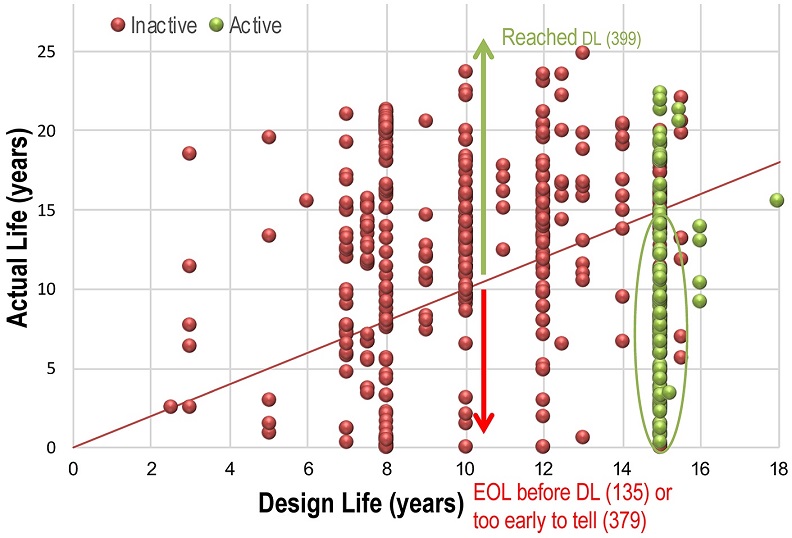The 2019 Satellite Lifetime Study surveyed design and actual life of U.S. military, civil, commercial, and foreign commercial satellites launched between 1980 and 2018. The scope was limited to free-flying, Earth-orbiting satellites with mass greater than 100 kg and design life greater than 1 month.
Design life is determined from requirements documents or published values. End of life is defined as the loss of the primary mission (primary payload failure, bus failure, out of operational orbit) or retirement. Actual life is defined as the time between successful launch and end of life and does not include secondary missions.
For the U.S. military and civil satellites, design life more than doubled for class A satellites while remaining constant for classes B and C satellites. In recent years, design life for U.S. military and civil satellites has clustered around long design life (>11 years) and the experimental range (1–3 years) with the overall trend of fewer satellite launches.

The design life for commercial satellites increased by greater than 50% for satellites with cost <$300M and remained flat for satellites with cost >$300M. The launch of high-cost satellites began only in 1994. For commercial satellites, large constellations, including Globalstar and Iridium, dominated the 5–8 year design life category in the 1995–1999 launch range.
With respect to actual life, ~87% of U.S. military and civil satellites and ~75% of commercial satellites met or exceeded their design life.
There is a high number of “too early to tell” satellites: These were launched too recently to determine if they will reach their design life. Due to this large number (49 U.S. military and civil, 379 commercial), the percentage of satellites that reach or exceed design life could be altered significantly over time as they reach their end of life.
U.S. military and civil satellites also experienced a higher mean actual life and greater success rate than commercial satellites of the same design life group.

The study will be published in a soon-to-be-released report titled “2019 Satellite Lifetime Study.”
For more information, contact Kristine Ferrone, 281.283.6462, kristine.l.ferrone@aero.org.
This story appears in the December 2019 issue of Getting It Right, Collaborating for Mission Success.
Subscribe to Getting It Right







